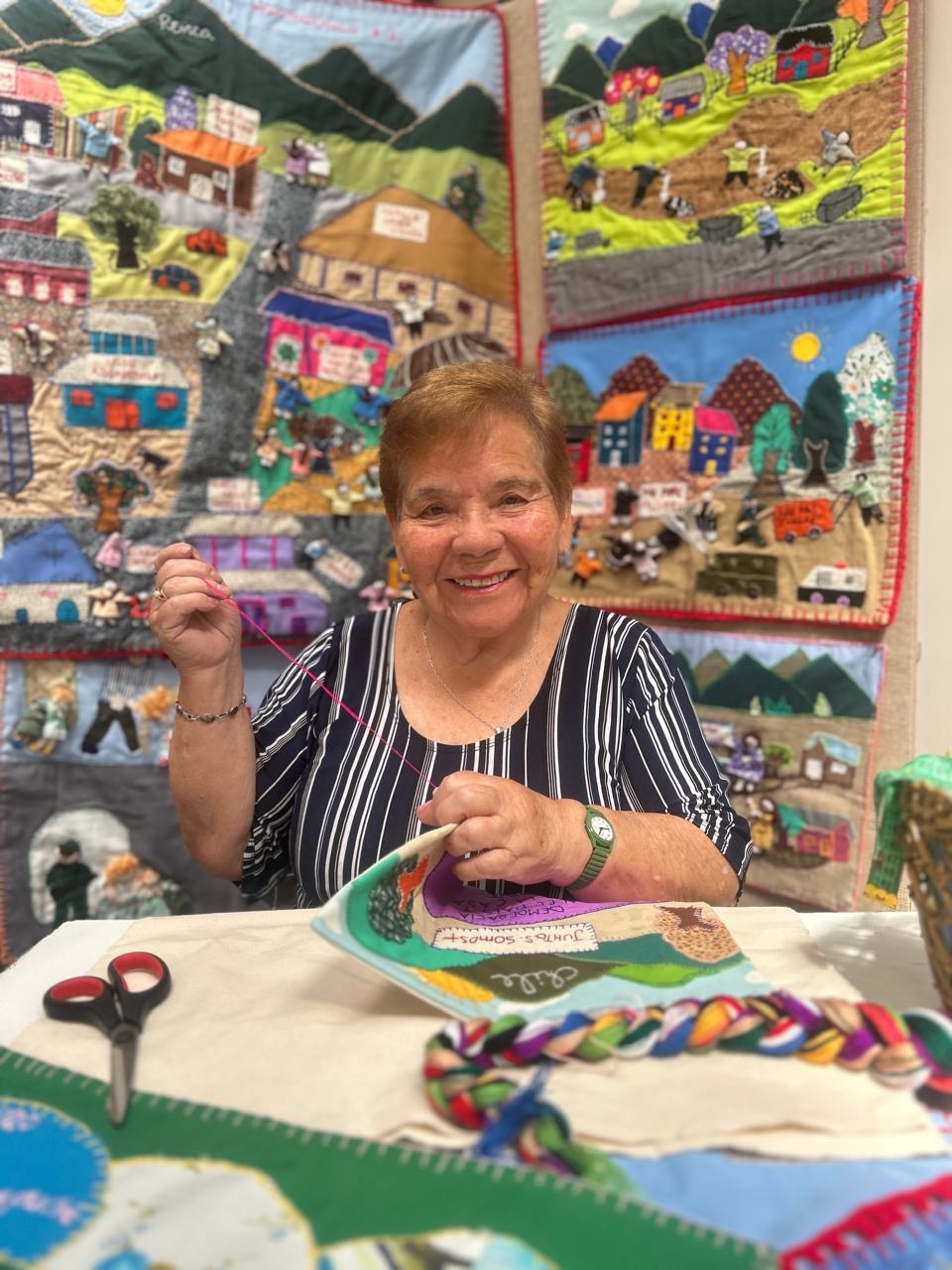 Aída Moreno
Aída Moreno Aída Moreno Reyes
Aída de Lourdes Moreno Reyes is the President of the Huamachuco Women’s House (Casa de la Mujer de Huamachuco) Renca, Chile. Artistic director of the Arpillera workshops of the Huamachuco Women’s House.
She was born in Chanco, a small agricultural town in central Chile. Shortly before her twentieth birthday, she arrived with her family to the Huamachuco sector, joining the crews that, with volunteer work and popular organization, began to raise the Huamachuco population. The Popular Unity government (Gobierno de la Unidad Popular) (1970-73) of Salvador Allende Gossens, reinforced her early civic vocation: participating in the coordination of the Supply and Price Control Boards (JAP) in the neighborhood.
The military coup of 1973 and the dictatorship that lasted until 1990 disrupted Huamachuco; a raid by the political police prompted her to participate in the Basic Ecclesial Communities and, soon after, in the workshops that the Vicariate of Solidarity organized for working-class women. There she met the artist Valentina Bone-a decisive figure in the reinvention of the arpillera-who taught her how to recombine flour sacks and scraps of fabric into embroidered scenes as a visual testimony that served to communicate the reality of the country and also as an economic support for women and their families.
In 1977 a group of neighbors from the Huamachuco population began to meet weekly -first to discuss wages, housing and human rights; then to embroider- consolidating the Huamachuco Women’s House on March 7th, 1989. Five years later they recovered an abandoned supermarket and transformed it into a workshop-school, library and community daycare center, a model now supported by various international organizations.
The arpilleras of Huamachuco have participated in the first Biennial of Textile Art (2023), the exhibition A Memory that Cares Together in 2023, the exhibition Memories (a)stitches of the National Historical Museum, and in 2024 their methodology was presented at the Encounter of Textile Practices and Women of the University of Illinois in the United States. Part of the historical corpus of the work created in Huamachuco is now part of the collection of arpilleras of the Museum of Memory and Human Rights of Chile, while another set is preserved in the living archive of the Casa de la Mujer de Huamachuco, although the whereabouts of hundreds of arpilleras created during the dictatorship is unknown, which has led Aída to promote different initiatives for the recognition of thisbody of work.
Aída’s trajectory has been recognized with the certificate “to serve as an example to the new generations” awarded at the closing of the Vicaría de la Solidaridad (1992); the government’s Bicentennial Seal (2010); the Elena Caffarena Award; the titles of Illustrious Daughter and Pride of Renca; the inclusion among the “100 Greatest Leaders” of Conecta Mayor-UC and Banco de Chile (2022); and, decisively, her incorporation-along with nine other creators-into the Inventory of Intangible Cultural Heritage of the Chilean Ministry of Cultures in 2023. Today she is a member of the board of the Universidad Academia de Humanismo Cristiano, where she promotes dialogue between academic research and the practices of grassroots social organizations.
Almost eight decades after her journey from the Maule coast to the Santiago periphery, Aída Moreno continues to embroider scenes and teach the craft of Arpillera in the artistic workshops of the Huamachuco Women’s House. Her biography shows how an art born in precariousness became a living archive, an aesthetic school and a political tool: each Arpillera that comes out of her workshops insists that the beauty of the precarious can be a forceful form of memory and collective dignity.